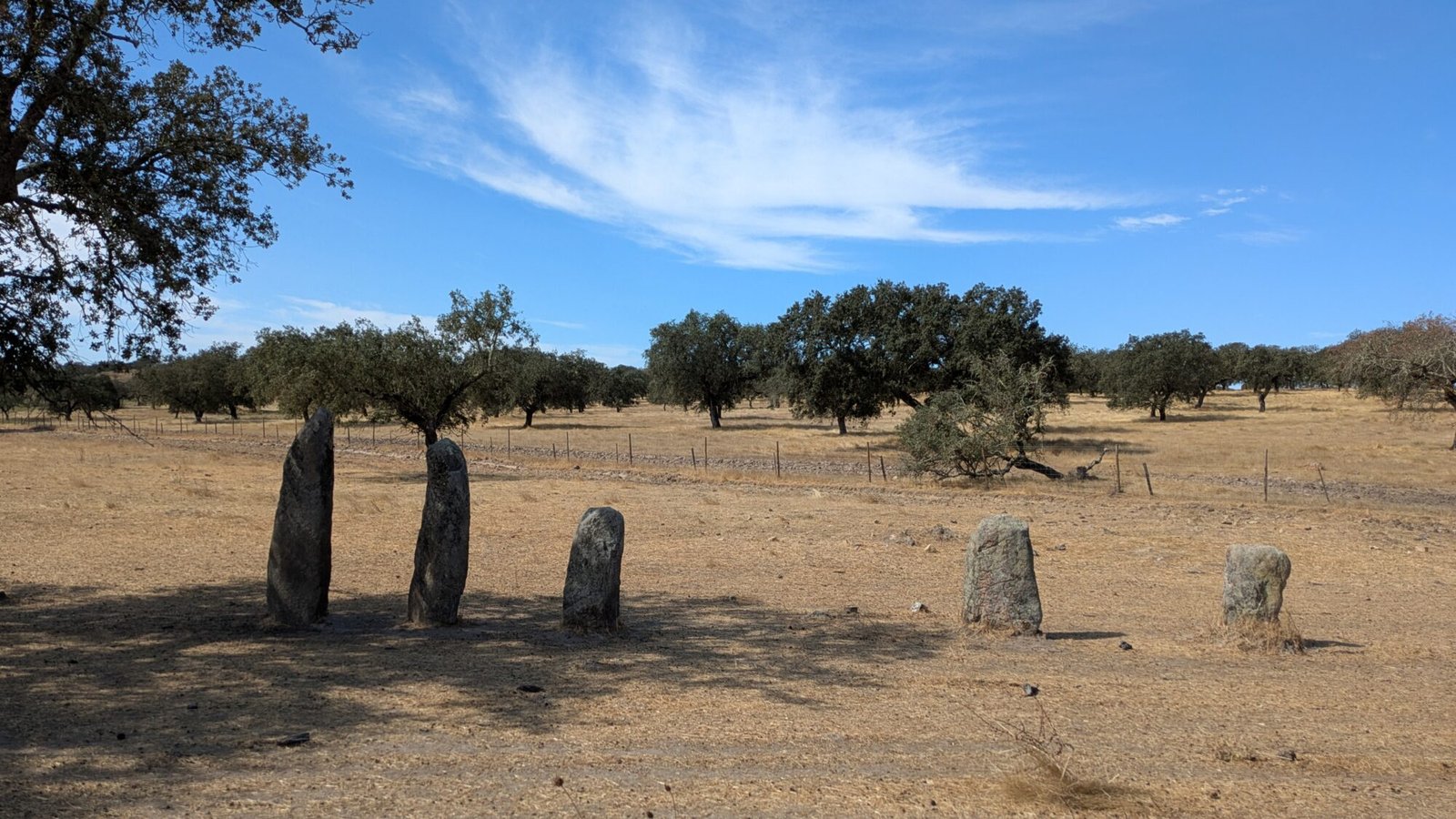Also known as: Alinhamento da Têra, Alinhamento do Monte de Têra
Standing tall with flocks of sheep to keep them company, the stone pillars line up from East to West. There are gaps in their formation revealing the loss of some of their number over the thousands of years they have stood here. The five remaining stones stand proudly after being restored to their original positions and vertical aspect.
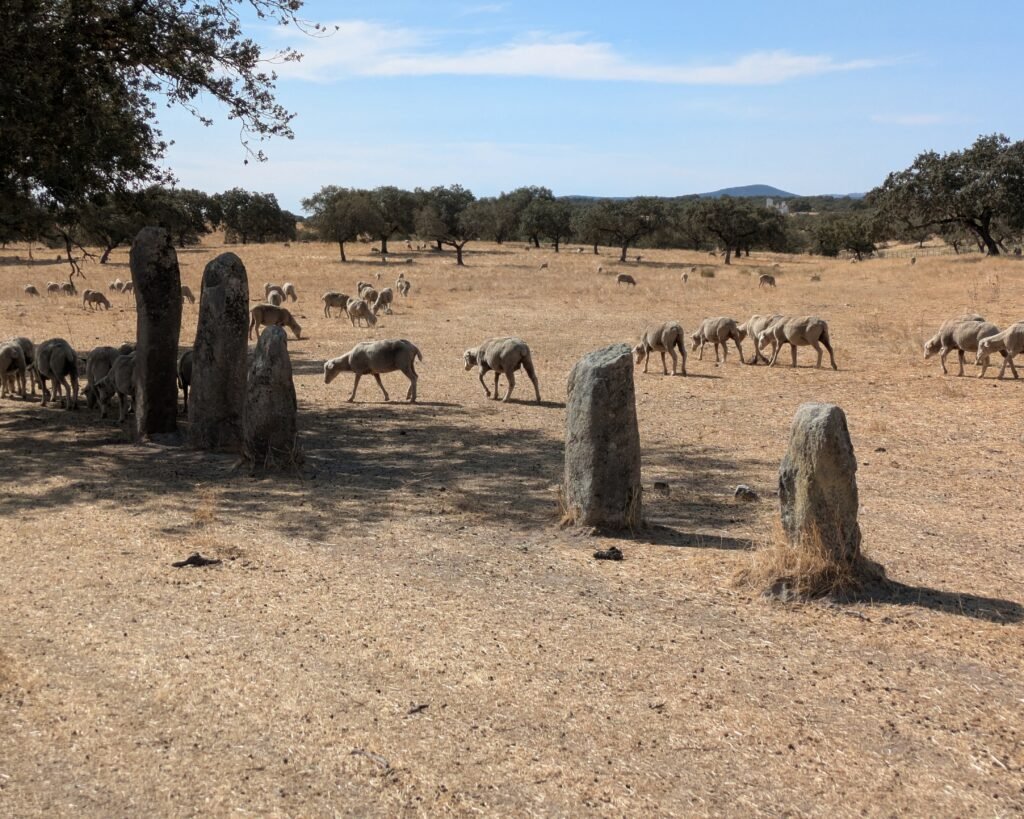
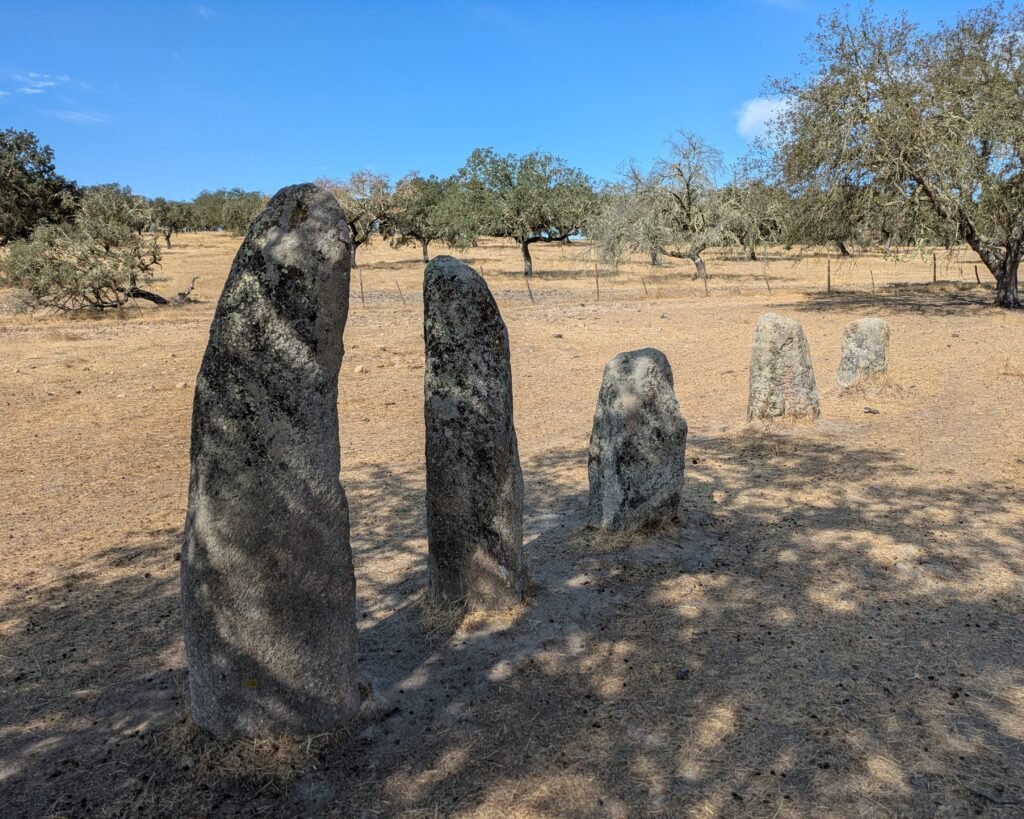
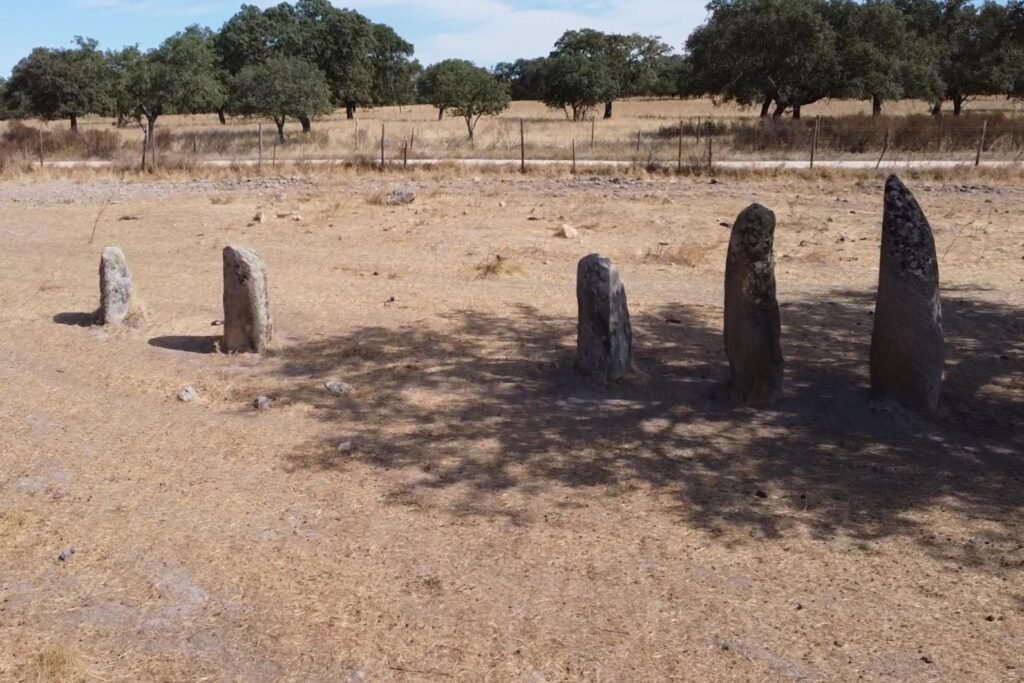
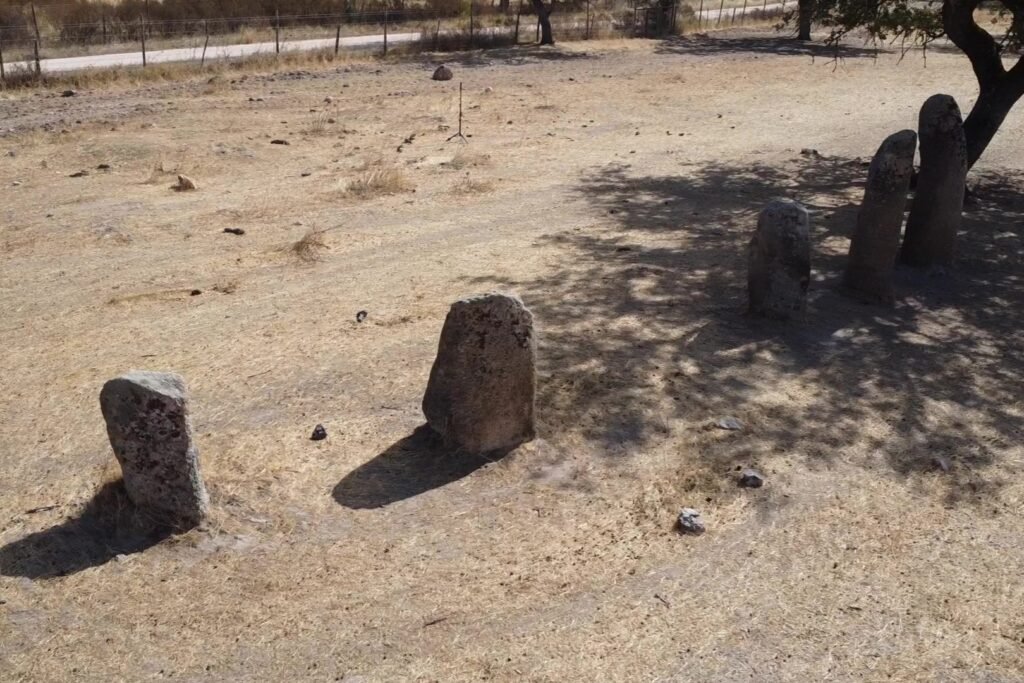
This group (“conjunto”) of five menhirs stands in a straight line. This is a highly unusual arrangement, which is possibly unique in all of Iberia.
It was identified in 1996 by Manuel Calado and Leonor Rocha. It was excavated by Leonor Rocha in 1996/1997 and recovered in 1998. During the excavations, the sockets of the five menhirs were found in a stone structure of various stones, forming a kind of “pavement” with clear spots for the menhirs. An additional four sockets were found, indicating that the original alignment was probably of nine menhirs. During the excavations, a few artefacts were found, including some Neolithic stone tools. This originally led to the presumption that the menhirs were prehistoric, but this was revised after further excavations were done.
Near to the menhirs, an incineration necropolis was found and excavated, which has been covered over again after being excavated. This necropolis consists of a stone structure with an apparently ovoid plan, which covered some “cist”-type graves or simply funerary urns. The site contained about four dozen interments1. This structure was also associated with another set of menhirs (probably also nine), all of which were decontextualized due to the construction of the access road to the mountain and agricultural work. This was excavated between 1999 and 2005. The collected materials point to a chronology within the First Iron Age (6th-5th century BC).
The proximity of the two sites leads to a few hypotheses regarding the alignment. It’s possible that the alignment was prehistoric and the stones were reused in the Iron Age, or it’s possible that the alignment was built contemporaneously with the necropolis. There likely needs to be more studies done to definitively date the alignment, but Rocha concludes that this alignment of menhirs most likely is contemporaneous with the necropolis, dating to the Iron Age2.
Location
The alignment of menires is in the Alentejo, district of Évora. It’s in the municipality of Mora, parish of Pavia. It is in a private farmland just outside the town of Pavia.
Access
The cromeleque is on private land and is NOT publicly accessible.
I was able to visit the site by making a special arrangement with the landowner. The landowner does not want people entering the land: there have been multiple times that unauthorized visitors have left rubbish, damaged fences, and had dangerous encounters with the livestock.

Links
- Entry (in English) in the Megalithic Portal
- Description (in Portuguese) from the Museu do Megalitismo de Mora
- Description (in Portuguese) from the Câmara Municipal de Mora
- Description (in Portuguese) from Archaeologist’s Portal of Directorate-General of Cultural Heritage
Nearby
The Cromeleque de Vale d’El Rei is on the same private land. Again, it is not possible to visit without making arrangements with the landowner.
In the town of Pavia, the Anta-Capela de São Dinis is easily visitable. There are many other prehistoric sites in the region. You can consult with the Interactive Museum of Megalithism, in the town of Mora (16km to the West), for more information. (On the way to Mora, the Cromeleque das Fontainhas is just off the main road and is publicly accessible.)
Sources
- Rocha, Leonor. Os Mais Belos Monumentos Megalíticos Do Concelho de Mora. Lisboa, Município de Mora, 2023. ↩︎
- Rocha, Leonor. “O Monumento Megalítico do Monte Da Têra (Pavia, Mora), Sector 2: Resultados Das Últimas Escavações.” Muita Gente, Poucas Antas? : Origens, Espaços E Contextos Do Megalitismo, Instituto Português de Arqueologia, 2003, pp. 339–349, hdl.handle.net/10174/2272. Accessed 5 Sept. 2025. ↩︎
